Description
Comparison of SBS Polymer and Rubber Modified Mixtures Using Balanced Mix Design and Structural Capacity Assessment
Carolina Rodezno, Buzz Powell, Nathan Moore, Adam Taylor
ABSTRACT. Over the years, there has been an interest in using recycled tire rubber (RTR) to enhance the performance of asphalt pavements while eliminating the growing amount of scrap tires being landfilled. Previous studies have documented that properly designed and constructed asphalt pavements containing RTR can perform well. Potential benefits include improved resistance to rutting as well as several modes of cracking, reduced road maintenance, and decreased temperature susceptibility of the asphalt binder. Despite positive research related to laboratory and field performance of rubber modified mixtures, adoption by state agencies has not increased significantly over the past decade and polymer modified binders are still preferred. Barriers to adoption and implementation of traditional RTR technologies include performance problems in early field trials, the need for special manufacturing equipment, storage and settlement issues, and the inability to apply current binder and mixture specifications to RTR.
The increased use of recycled asphalt materials and other asphalt modifiers such as RTR has increased implementation interest in balanced mix design (BMD). A BMD mixture is designed to achieve an optimal balance between rutting resistance and cracking resistance, rather than simply relying on mix volumetrics. Since BMD utilizes testing of the mixture rather than individual components, it incentivizes state agencies to utilize technologies like RTR that can potentially provide long-lasting asphalt pavements.
This paper compares the performance of an asphalt mixture modified with a SBS binder to the performance of two asphalt mixtures modified with RTR using a dry and a wet process. The mixtures were compared in terms of the optimized BMD results using the Hamburg Wheel Tracking Test and IDEAL-CT, and theoretical structural pavement analysis in terms of fatigue performance using dynamic modulus (E*) and cyclic fatigue as inputs for the FlexPaveTM program. The results of the study showed that both rubber modified mixtures have equivalent rutting and cracking performance compared to the polymer modified mixture in BMD testing. Moreover, structural evaluation showed that the rubber modified mixtures had either equivalent or better structural capacity compared to the SBS polymer mixture.
KEYWORDS: Recycled tire rubber, dry process, balanced mix design

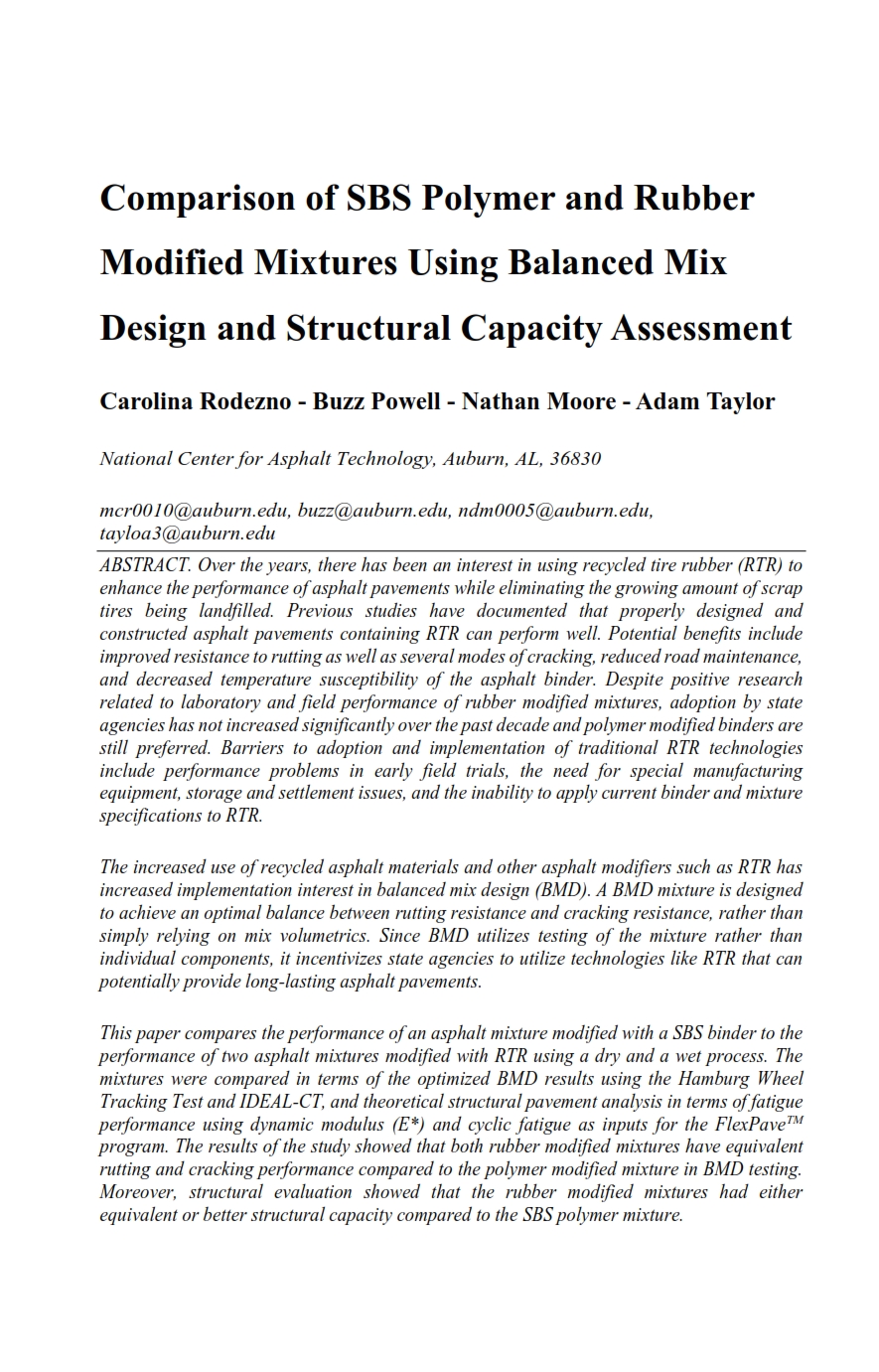
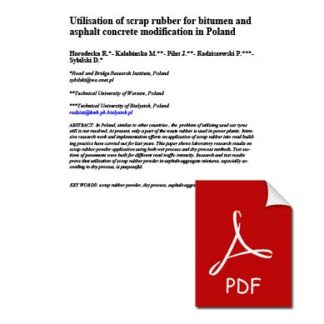
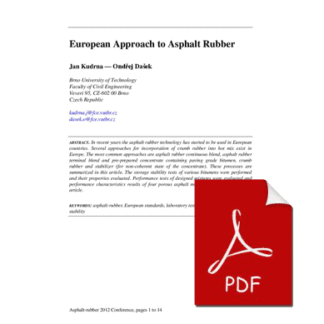
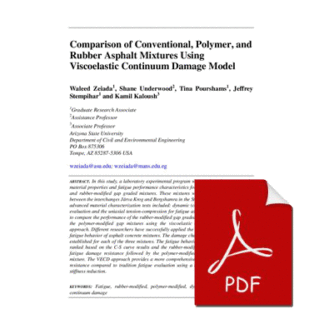


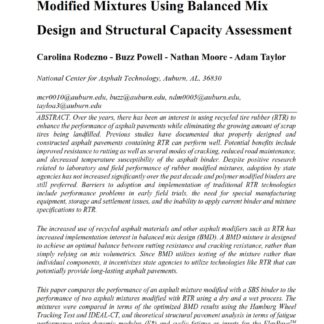
Reviews
There are no reviews yet.